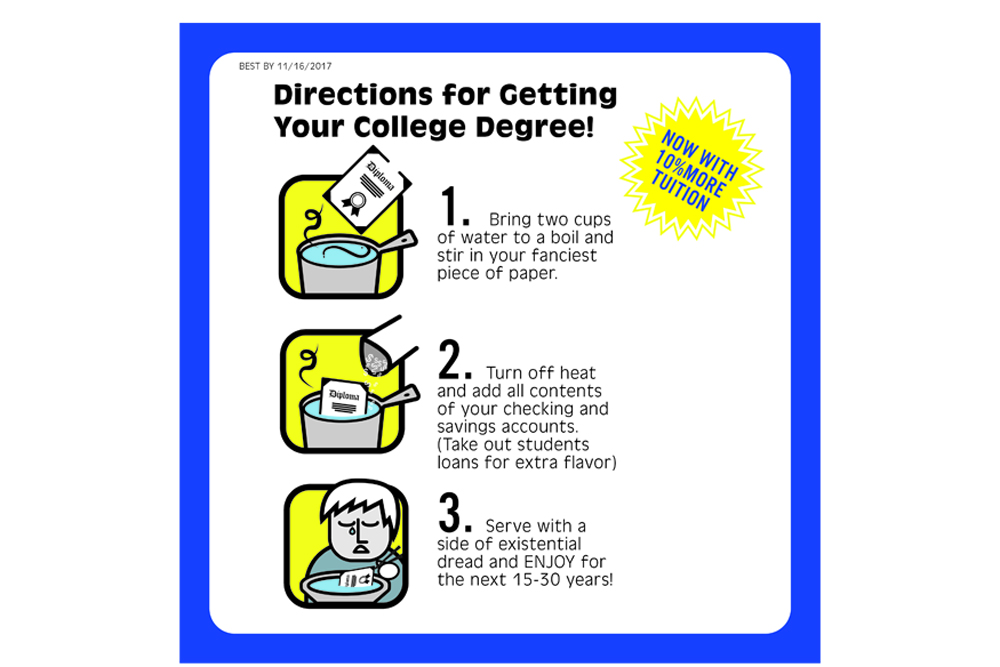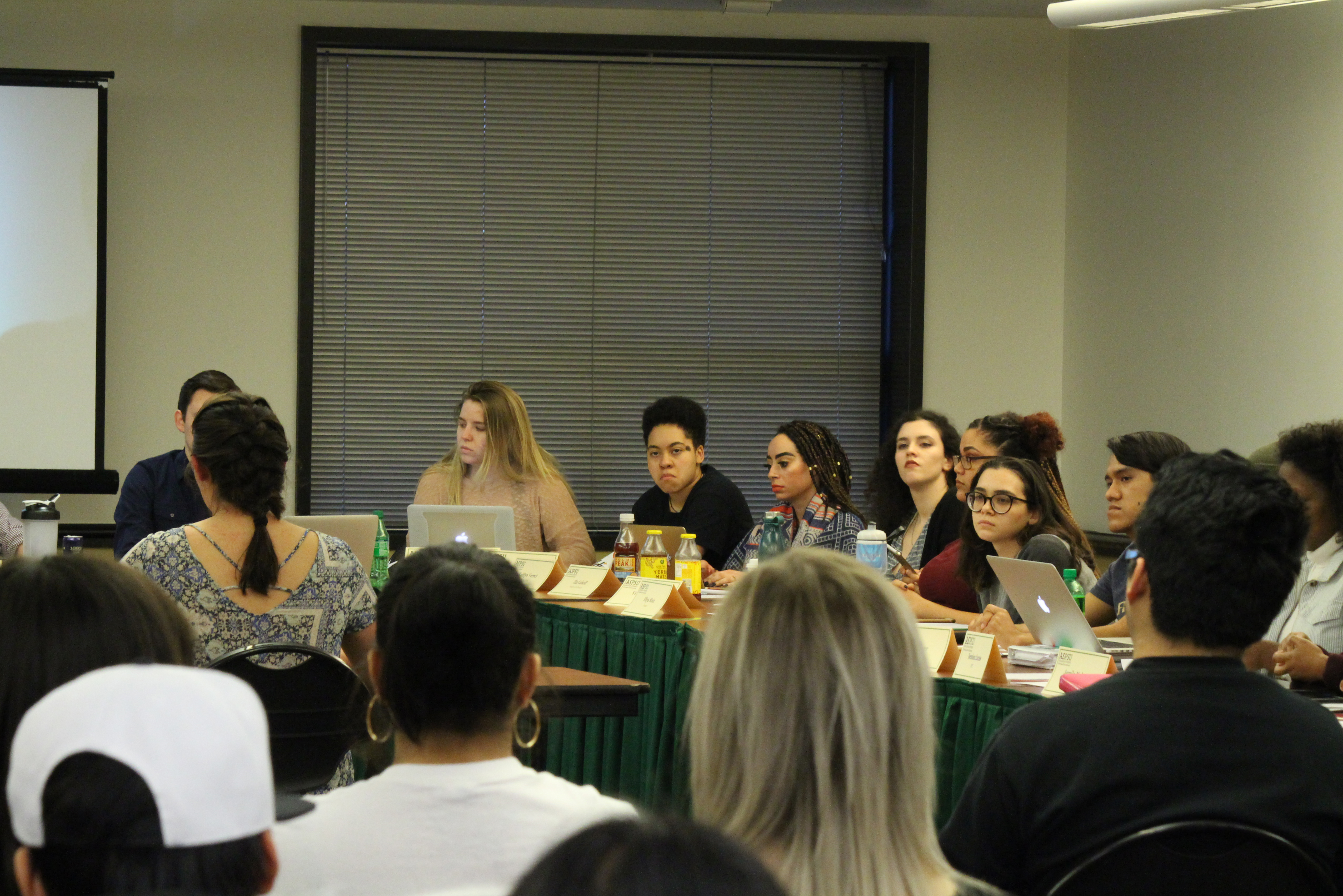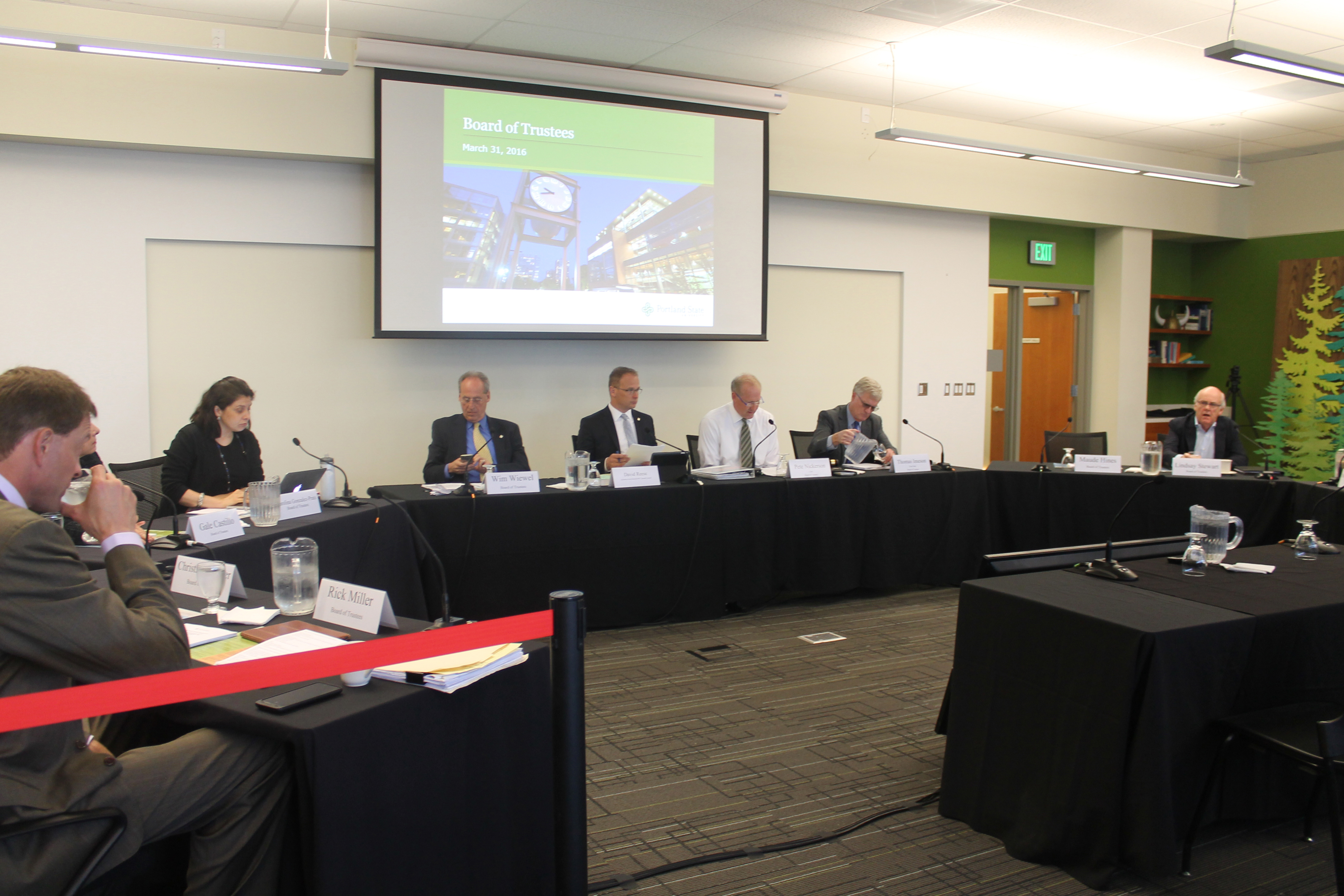Portland State’s Board of Trustees just voted to increase in-state tuition by nine percent. Across the state tuition is rising. University of Oregon boosted its tuition rates by more than ten percent, and Oregon State University is looking at a 4 percent bump. For PSU, a $693 increase for the entire year may not seem like a lot to some students, but over the last 12 years tuition increased 82 percent for in-state students, from $4,960 in 2005 to $9,030 for 2017–18.
The only decrease in tuition during the last 12 years followed a 29.9 percent tuition increase from 2010 to 2011 which set in-state tuition higher than ever at $9,261. It was quickly dropped by 18.6 percent the following year to $7,653, which breaks out to about a five percent net increase per year for that time period. On average for the last 12 years, tuition has increased 6.14 percent per year. For the last three years, tuition was increased by 5.2 percent from year-to-year. This year’s 9 percent increase nearly doubles the last three increases, and is 30 percent above the average annual increase from 2005–2016.
Federal Pell grants have been slowly falling behind tuition at PSU. In the 2005–06 academic year, 5,971 PSU students received $14,974,290 from federal Pell grants. Tuition was $4,960 that year which means the averaged $2,507 students received covered almost 29 percent of their annual tuition. In the 2016–17 academic year, around 24,000 awards were handed out over all four terms totaling $37,298,633 from Pell grants, which is roughly $1,555 per-student per-term. Pell grants supplied about 20 percent of tuition for students in 2016. This nine percent drop over ten years shows a decline in federal support for students seeking undergraduate degrees.
The Oregon Opportunity Grant has also been slowly losing ground. In 2005–06, 3,058 students received $3,935,217 for the entire year—$1,287 each on average—which paid about 26 percent of annual tuition. For all of 2015–16, the OOG provided 5,856 students with $10,165,295 in financial aid, which comes to about $1,736 per student on average. Compared to the $8,711 tuition rate for that academic year, the OOG paid roughly 20 percent of students’ annual in-state tuition. This six percent decrease is not the end of the world, but it is a sign that tuition is beginning to outstrip what the state is willing to contribute to higher education. For the 2015–16 academic year, 22,506 students were enrolled as undergraduates, which means only 26 percent received aid from the OOG.
An important factor to note is that total enrollment has declined in the last six years at PSU, and that means fewer students are around to foot the bill. What is also evident in the figures above is that grants are not being awarded to the majority of students. Whether this is through qualification restrictions, application rates, or a lack of available funds is unknown.
On the day of Board of Trustees’ vote, entirely too few students gathered in the Park Blocks to hold a brief march displaying their disapproval of the proposed increase. Although the university hosts around 30,000 students, less than one percent of students showed up to the march. The Board’s decision seemed unaffected by the desires expressed by the current student body, and the reason why requires examination.
Rising tuition is an issue that should be important to the entire student body. Annual in-state tuition for full-time students will be $9,030 after the increase takes effect. If a student receives the maximum annual Pell grant of $5,920 for the 2017–18 academic year, it covers less than two-thirds of tuition. The OOG can award students an additional $2,250 for the 2016–17 academic year which kicks in roughly 25 percent more. The maximum award for 2017–18 has not yet been determined. Not all students at PSU do receive grants however, and those who do still have a portion of their annual enrollment cost that needs to be made up with loans or personal income.
The PSU students protesting the tuition increase reminds me of the Occupy Wall Street movement of 2011 and 2012. The Occupy movement was born organically from an idea. Protesters sought change from large companies and government organizations. The group built its motivation around the concept of justice for the ordinary person. There’s the rub: The organizations that Occupy targeted are rooted in a realm of concrete and specific goals or ideas. When representatives from governments, banks, or other large companies finally agreed to listen to the demands of the Occupy movement, they did not understand what they were being asked. Occupy’s demands were ethereal and vague. With differences so vast between the two parties, they might as well have been speaking different languages.
PSU’s student body and BOT currently face the same problem as Occupy and its adversaries. The Board and the students are not speaking the same language, and they cannot find a mutually agreed-upon solution for their common problem. Students do not want tuition increased at all. Some students involved in the rally on Tuesday even expressed a desire for free education. Here is where the two groups begin to diverge. From the students’ perspective, an increase in tuition is avoidable. From the Board’s perspective, tuition can only go up.
Tuition keeps the lights on at PSU. The problem is, increasingly fewer students are footing the majority of the bill at this point. Comparing the cost of a degree to the available salaries for most entry level positions causes some people to question whether or not higher education is really worth it. Just imagine what it is like for students who do not get the degree, but take home all the debt from financing an education. What becomes clear is that high tuition is a problem.
So, how can students reduce their financial obligation in the face of almost guaranteed tuition increases? Get involved with the side that makes decisions. ASPSU provides input each time the Board adjusts fees and tuition. Contact your student representatives, or create an organization of your own that makes a change. Students are part of the voting public, but it is easy for a student’s voice to get lost. An individual has a hard time getting the ear of a politician. A group on the other hand can have the power required to change whatever matters to them—including tuition.
Find people who want to make the same kind of change. Most people get this step right. The newly formed group then needs to decide on a structure. The best way to do this is to study the organization with which the group will be communicating and create a similar organizational structure. One of the most notable failings of the Occupy movement came from an interaction with the mayor of Denver. When the mayor insisted that the group select a leader, the Occupy group elected a dog as president. Create a structure that facilitates communication between equals. Do not send a dog to talk to the mayor.
Approach the problem in the same way that the group you are talking to will. In the case of tuition increase, think like PSU’s BOT. Most people develop their perspective from their environment and experience, and people treat problems and solutions differently based on their perspective. Develop a solution that will make sense to these people because it is these people who will ultimately make the decision.
Present a solution that solves problems. Explain how the solution benefits everyone. Focus on all the positives to make a case for how your best interests are everyone’s best interests.
If all else fails, organize a public event that draws attention to your cause. When deciding on how to present a cause, consider your audience. Marching on the day of a vote did not dissuade the BOT because they do not decide the amount of funds they have to allocate. Members of the BOT are not the only people who need to see a public display of opinion. Politicians need to see that a group of the voting public care about tuition so they can supply the funding that students need. The BOT cannot keep tuition low just to keep future student debt down. Tuition will go up regardless because cost is going to go up regardless.
Students and faculty in favor of change should focus on state-level boards and committees like the Higher Education Coordinating Commission. The HECC’s vision is “to [foster] and [sustain] the best, most rewarding pathways to opportunity and success for all Oregonians through an accessible, affordable and coordinated network for educational achievement beyond high school.” If students want the HECC to continue to provide accessible and affordable opportunities for a college education, they need to start telling the Commission that their needs are not being met. The members of the HECC all have public contact information. Any student can reach out to the HECC to start a dialogue, but doing so as a group would have a more profound impact. First, start closely following the schedule of the HECC. Find out when they will be making decisions, when budgets come under review, and subscribe to their newsletter to keep up to date on what they are doing.
An easy way to start building a case for change with the HECC is to make a prewritten email publicly available. Make an email template with grievances and possible solutions, include contact information for the organization that is advocating this change, and ask students, alumni, and faculty to send in their own copy to the pertinent points of contact.
Leave space for personal comments from the sender and a place in the signature line for their name. Open letters are another great way to generate public awareness for your cause and shed light on problems like rising tuition or student debt. Emma Piorer of The Minnesota High School Women’s Players wrote a letter that should be considered a master’s class in public advocacy for change. Writing a detailed, comprehensive explanation of your case and the possible solutions can be one of the best steps on the pathway to change.
Whether you want more grant money available to qualifying students or more students to receive financial aid, it’s imperative to get involved. Find a group or form a group. Create a clear message with real solutions, make a plan to keep escalating the cause, and do not stop until a change is made.






